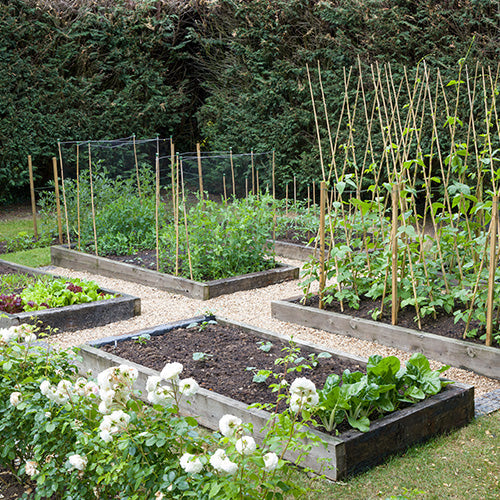Onions and shallots form a bulb when the number of daylight hours and the temperature hit the right combination, which activates their clock. Until that point, they use daylight to produce a good deal of top growth before forming bulbs. The more top growth, the bigger the bulb will be.
When the day reaches the right number of hours for that onion or shallot variety specifically, it will stop forming top growth, and form a bulb instead. The size of the bulb that eventually forms depends on the size of the "stalks", and the number of them.
There will be one ring in the onion or shallot for every stalk that is formed, and the larger the stalk, the larger each ring will be. However, bulb formation will pause when the weather is very hot, very cold or dry.
Watering
When first sown, you should water your newly planted onion or shallot seeds thoroughly, as this settles the soil around the bulbs and roots. You should water your seeds at regular intervals whenever the soil is dry, but don’t water them otherwise.
Stop watering, and feeding, once the onions have swollen and remove any mulch or soil with your hands, to expose the bulb to the sun
Feeding
You should occasionally feed your onion and shallot plants with a suitable fertiliser, such as our onion, shallot and garlic fertiliser. A light feed of sulphate of potash in June or July will help ripen the bulbs. You should feed an autumn-sown crop with a liquid fertiliser in March.
Mulching
Mulching the soil will help conserve soil moisture in addition to suppressing weeds. There are various ways this can be done, including using a thick layer of grass clippings, shredded leaves or clean straw.
Weeding
The area where you grow your onions or shallots should be weeded frequently, as onions don’t grow as well when surrounded by competing plants, leading to a smaller bulb size. You can weed by using Darlac tools such as a narrow hoe or onion hoe. Alternatively, you can also weed by hand. Whichever method you choose, you should be careful not to damage the developing bulbs.
Removing Flower Stems
You should break off any flower stems that appear, as this will impact the storage of the bulbs and their growth.

 How To Grow Onion And Shallot From Seed
How To Grow Onion And Shallot From Seed

 Sowing
Sowing

 Plant Care
Plant Care

 Harvesting
Harvesting

How to Grow
Sowing
Plant Care
Harvesting





























Leave a comment
All comments are moderated before being published.
This site is protected by hCaptcha and the hCaptcha Privacy Policy and Terms of Service apply.